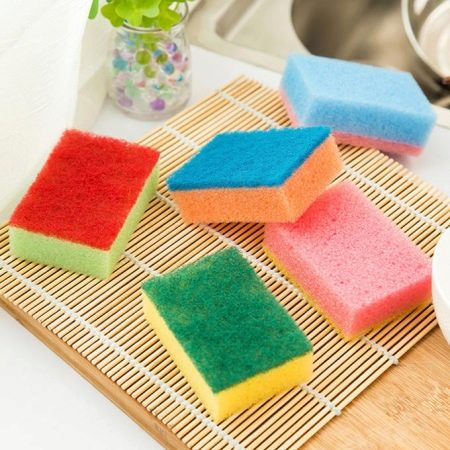Why are dishwashing sponges different colors?
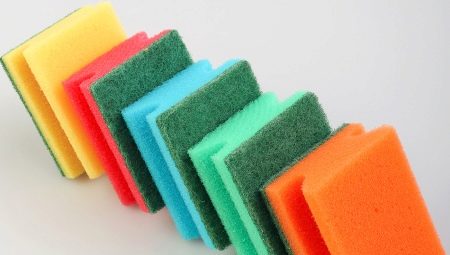
The classic dish washing sponge has 2 surfaces. The top is made of foam rubber, the bottom is scotch-bright. The color of the first part depends only on the manufacturer. It does not indicate any characteristics, but is only needed for beauty. The second layer is colored depending on the hardness, and the manufacturer cannot change this characteristic. On store shelves, you can find scotch-bright sponges in one of five colors.
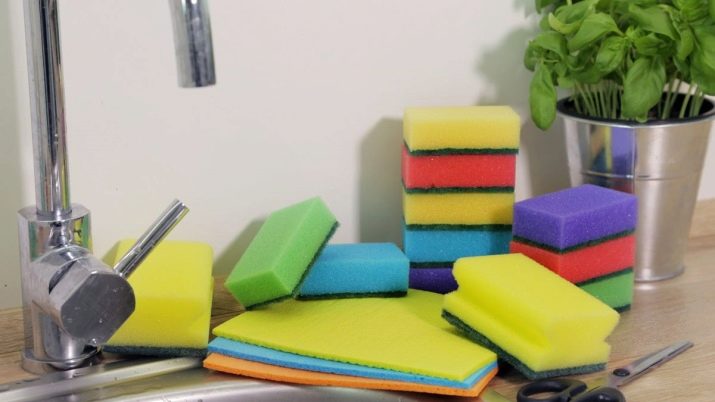
What does yellow mean?
A hard surface on a washcloth is used to remove dirt. Scotch bright yellow the colors are the most soft. Sponges of this type can be used for plates, glasses, cups and other utensils, accessories. The yellow layer provides gentle care. With the help of this tape-bright, you can polish glass or crystal dishes.

The sponge with a yellow layer is characterized by the absence of abrasive particles. These models are made specifically for cleaning delicate materials. Scotch tape does not scratch or otherwise damage. At the same time, such a sponge will not be able to wash off carbon deposits or dried-on dirt. Yellow Scotch Bright should be preferred for processing delicate dishes without serious contamination.
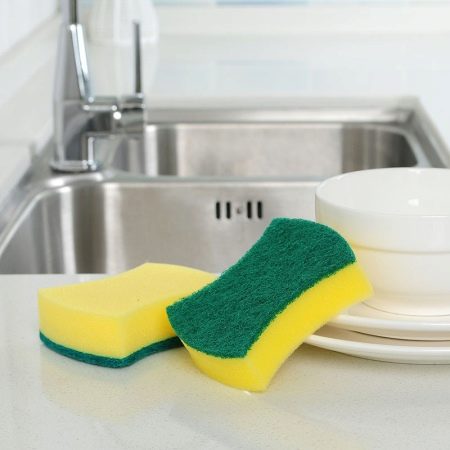
Description of colored green sponges
This option is most often found on store shelves. The most common adhesive tape can not be used with enamel and teflon cookware. Felt is quite dense and contains many abrasive particles.
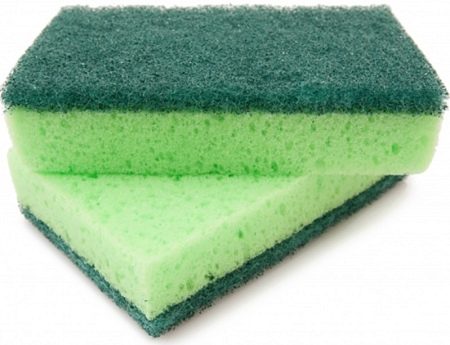
As a result, such a sponge can handle serious dirt. But it can also damage some surfaces by scratching them.
Similar options should not be used for cleaning dishes with a decorative or non-stick layer. However, it is a good solution for removing old dirt, dried food and deposits. You can also wash metal dishes with such sponges. This type of scotch-bright is ranked 4th out of 5 in terms of hardness.

Designation of other colors
Multi-colored sponges allow you to wash absolutely any item. It is only important to choose the right color for the adhesive tape, so as not to harm the surface. However, the packaging does not contain advice on the use of different types of abrasive surfaces. Manufacturers do not focus on the differences between the felt layer.
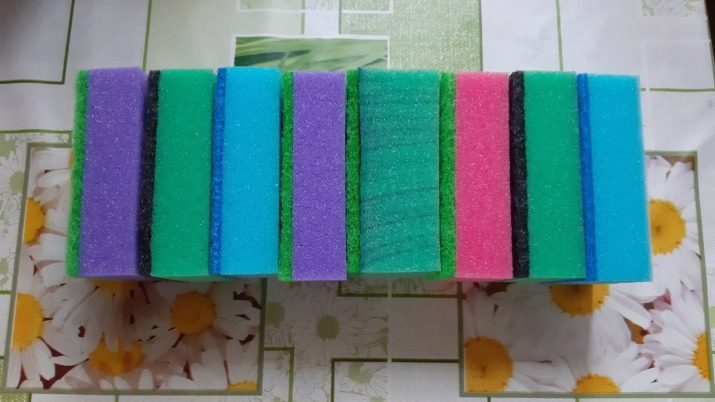
Yellow and green sponges are the most popular and are used by many housewives. However, there are three more types. Understanding their features will greatly facilitate housework.
- Black... The color indicates the maximum density of the viscose and the content of abrasives. Black variants are less popular, they are less common. The sponge is specially designed to remove carbon deposits and tough stains. It cannot be used on delicate surfaces: the abrasive will leave scratches and damage the material. Many housewives do not use black scotch tape at all for dishes. Most often, they use this type of sponge to wash the toilet and bathtubs, sinks. This is due to the fact that black felt makes it easier to remove dirt of any complexity and allows you to remove limescale.
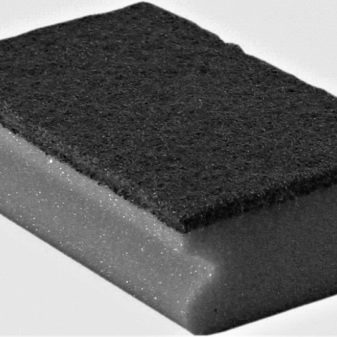

- Blue... Soft surface. This sponge is very similar to the yellow one, it is next in hardness. The model can be used for crushing glass products. Even with careful rubbing, the surface will not be damaged. However, tough stains or old food debris may not be handled.
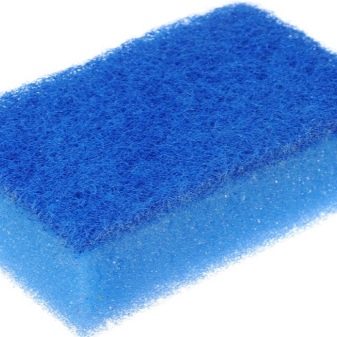
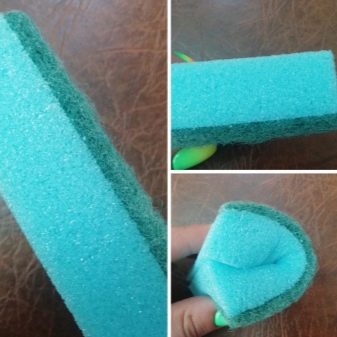
- Red... A fairly gentle surface allows you to remove dried food. At the same time, red tape-bright can be used to wash enamel and Teflon. Some manufacturers may have this felt colored orange. The pads allow you to remove rather serious dirt from delicate materials. Here are just stubborn stains and carbon deposits such a sponge is not capable of.
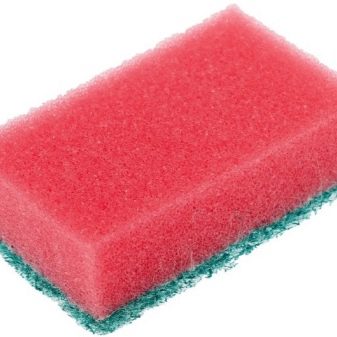

It is best to have different colors on hand and match them depending on the situation. In this case, it is important to replace the sponges in a timely manner.
The porous surface allows microbes to actively multiply. One sponge should be used for no more than a week.
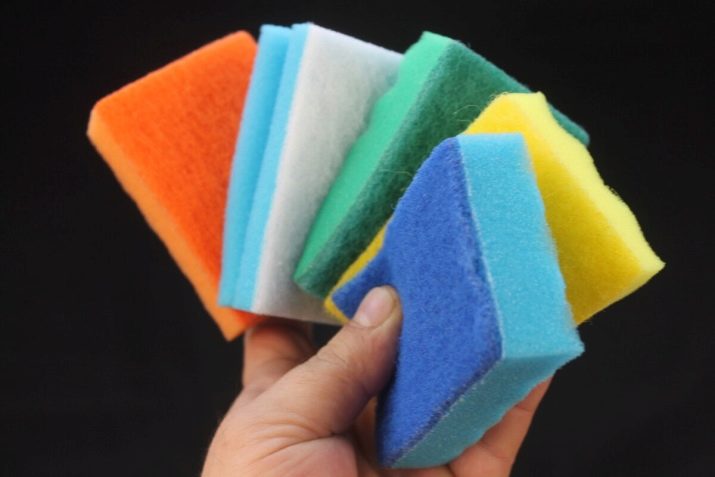
It is also worth noting that Scotch-bright shades in some cases depend on the manufacturer. For example, red surfaces can sometimes look more like red. This is due to the peculiarities of the dyeing technology. It is convenient to use sponges from one manufacturer so as not to get confused.
If the house has a lot of dishes made of delicate materials, then it is worth stocking up on yellow and red models. Use green scotch brushes to crush ordinary cups, plates, metal pans and pans without a non-stick layer. Blacks should be kept on hand for easy removal of the toughest stains. The use of pads with different stiffness allows you to get rid of dirt and not spoil the dishes.
